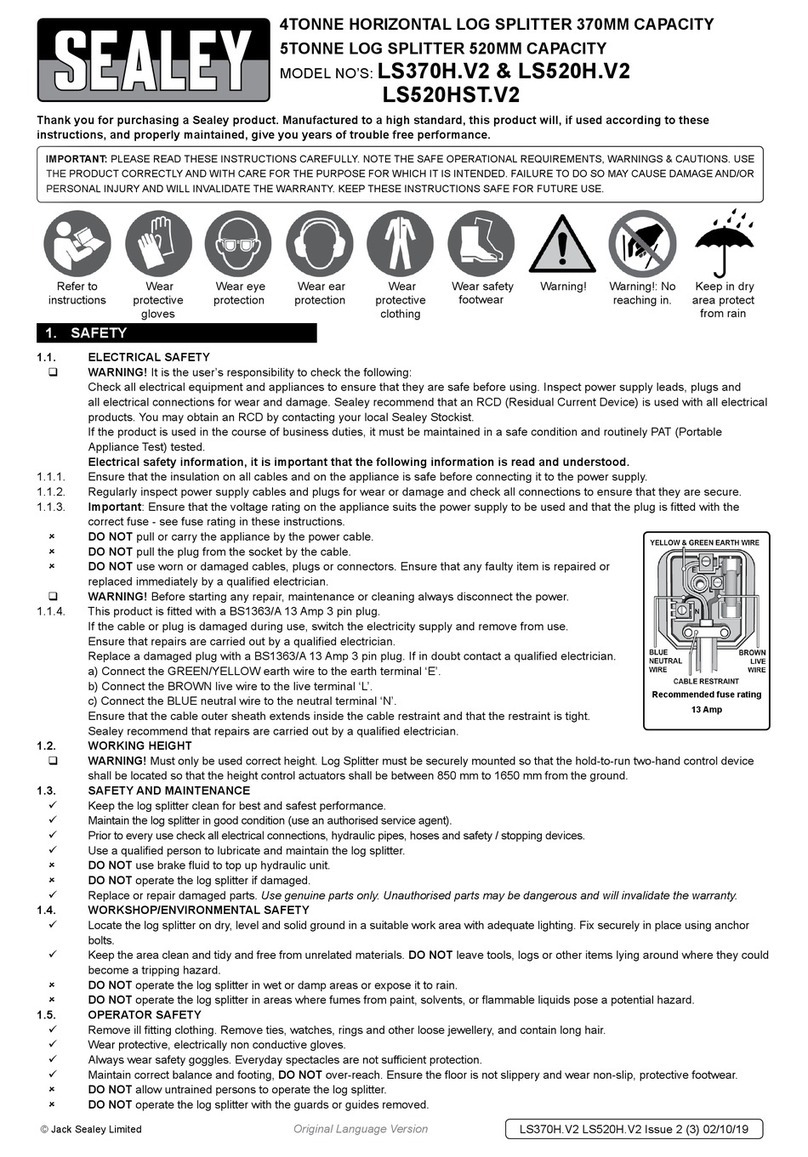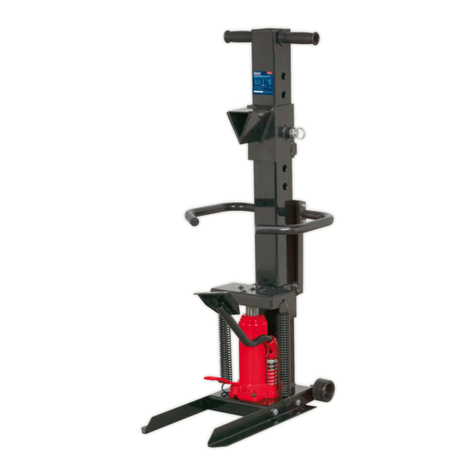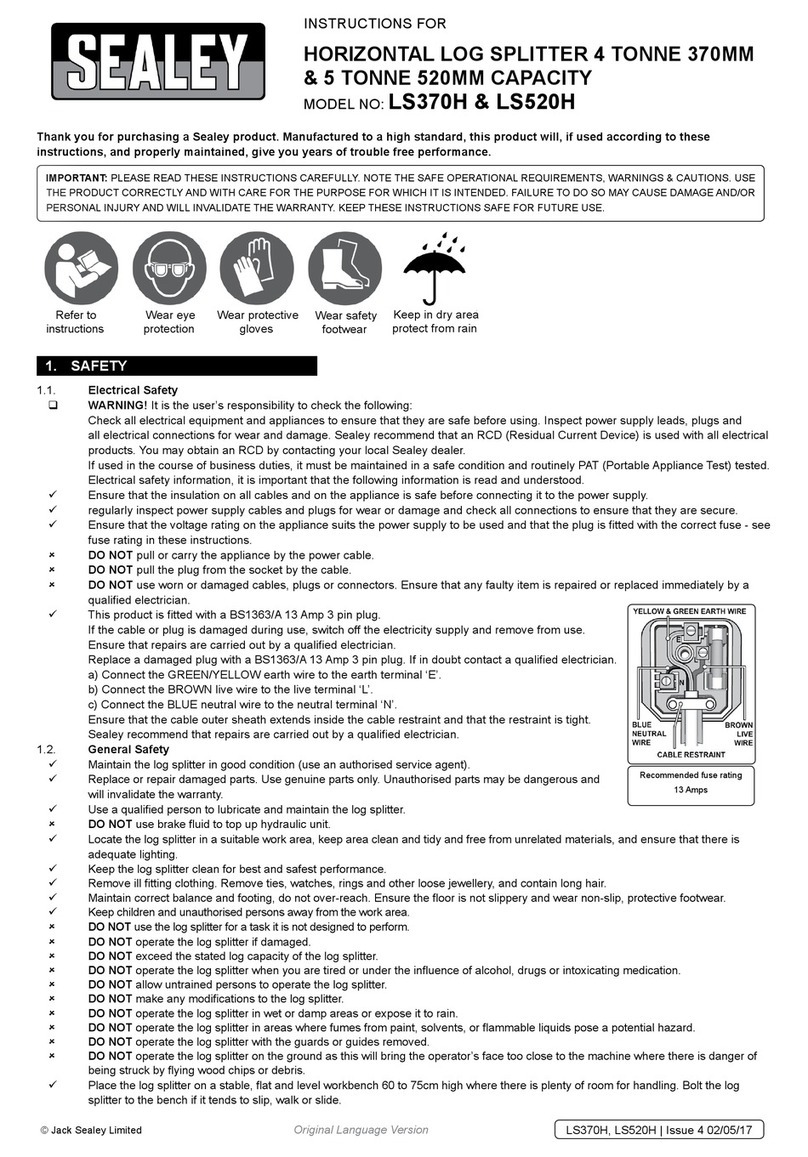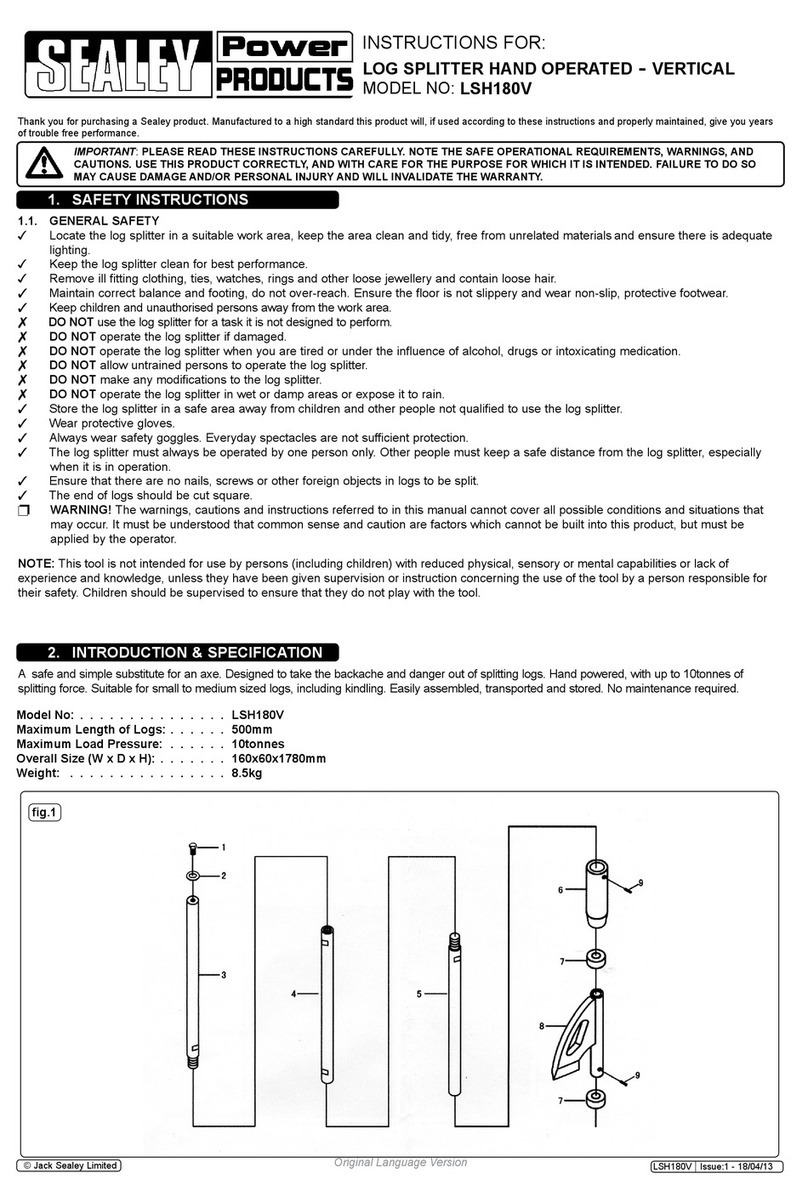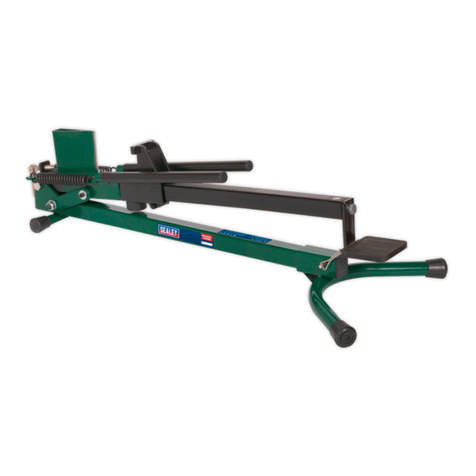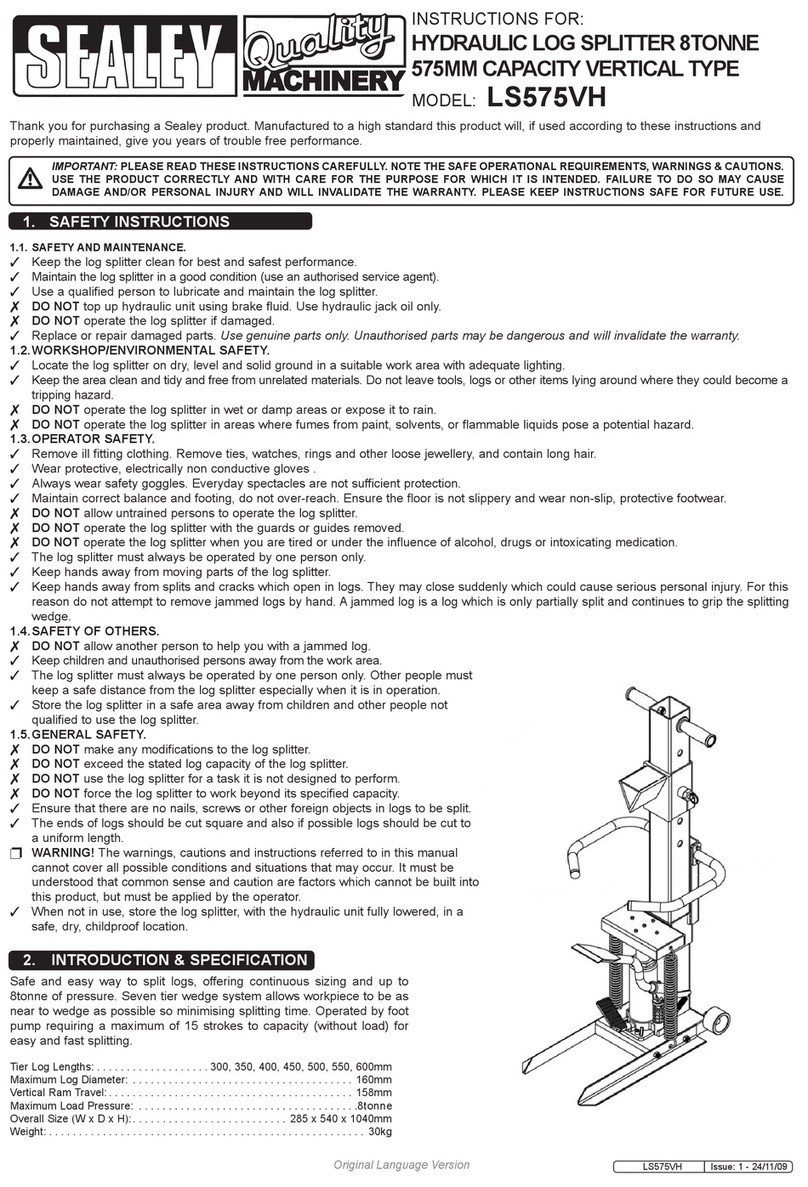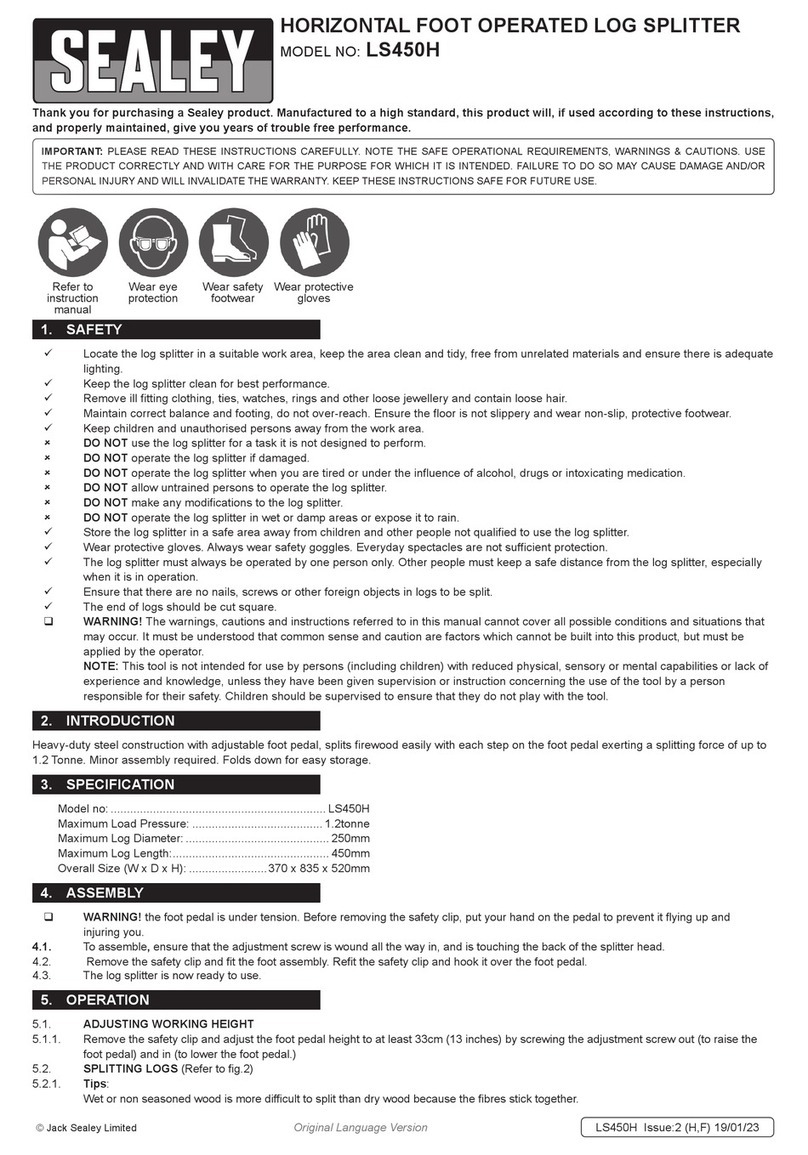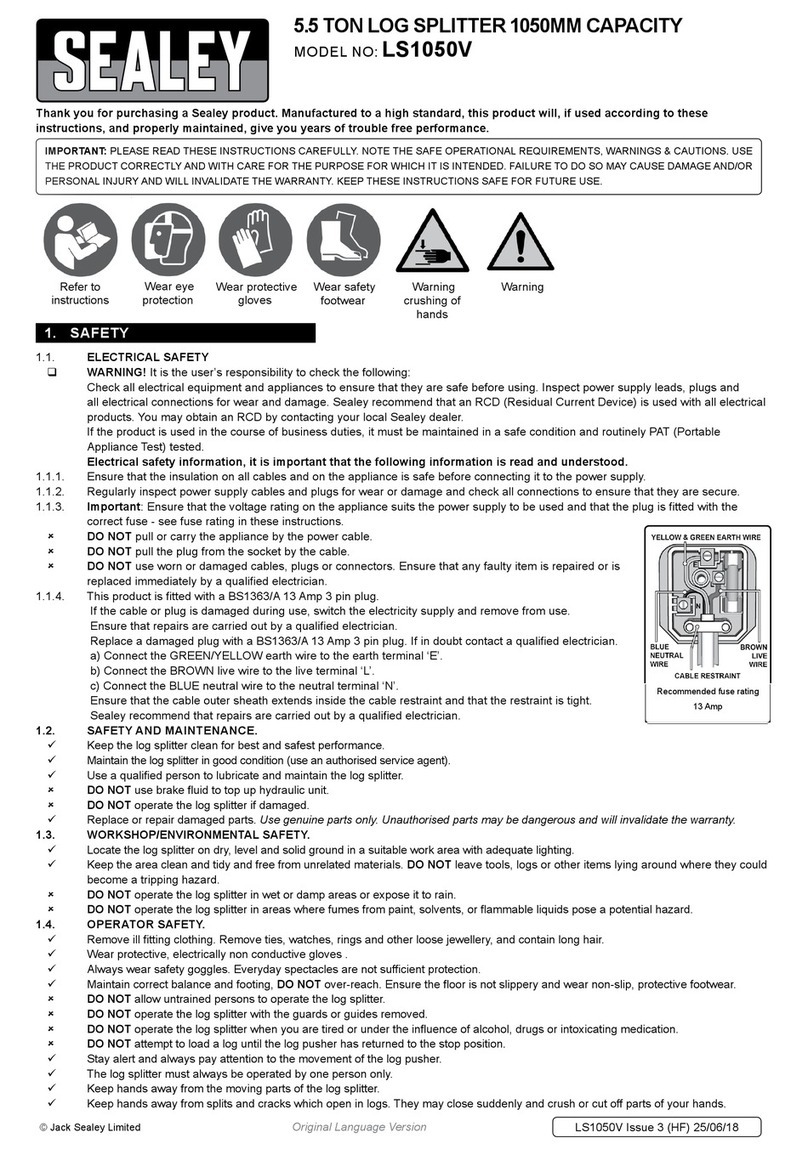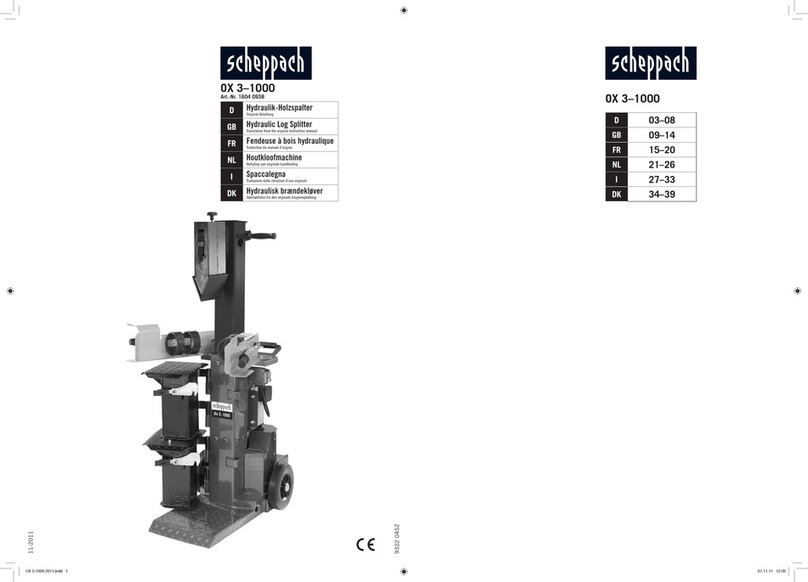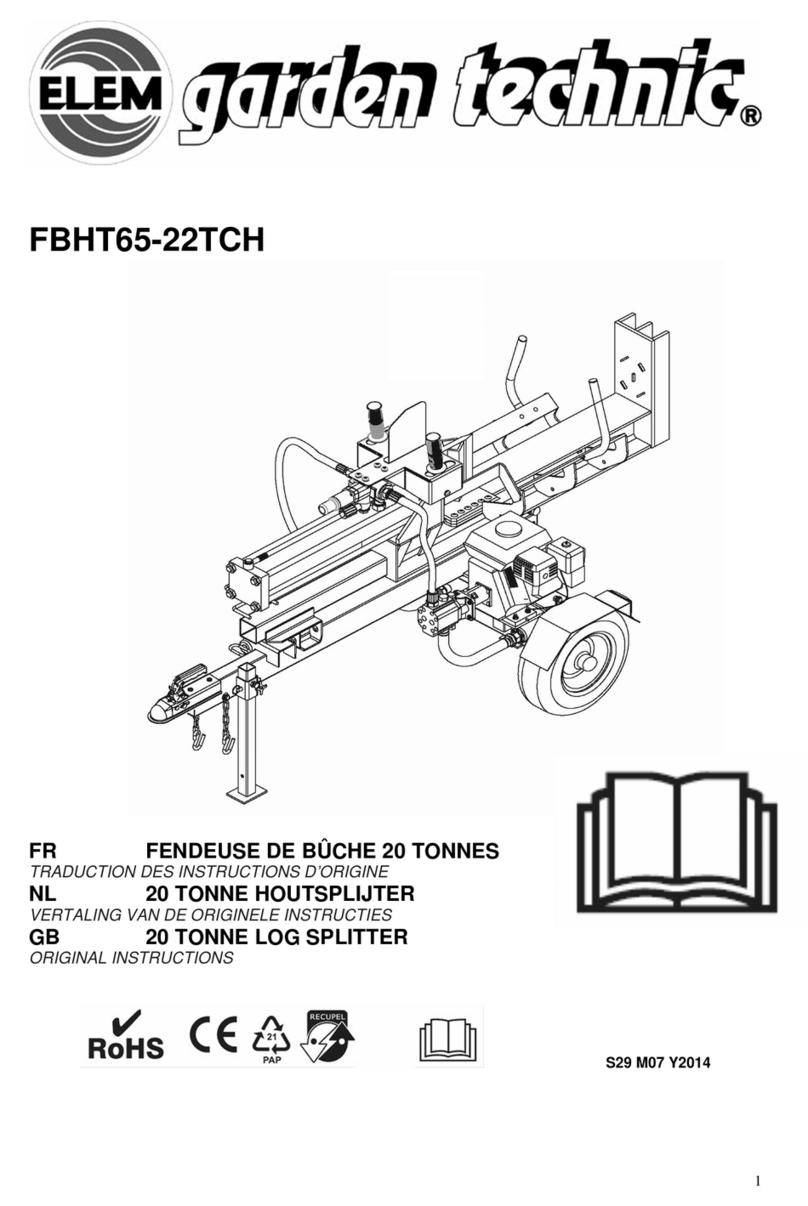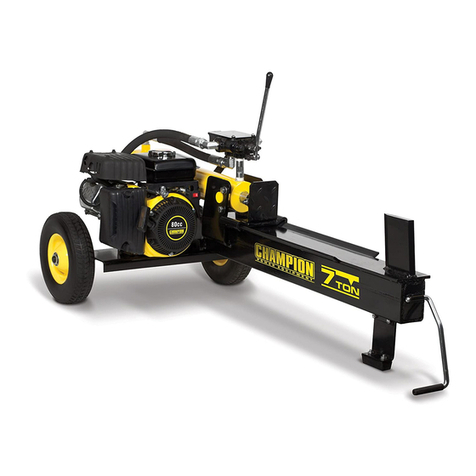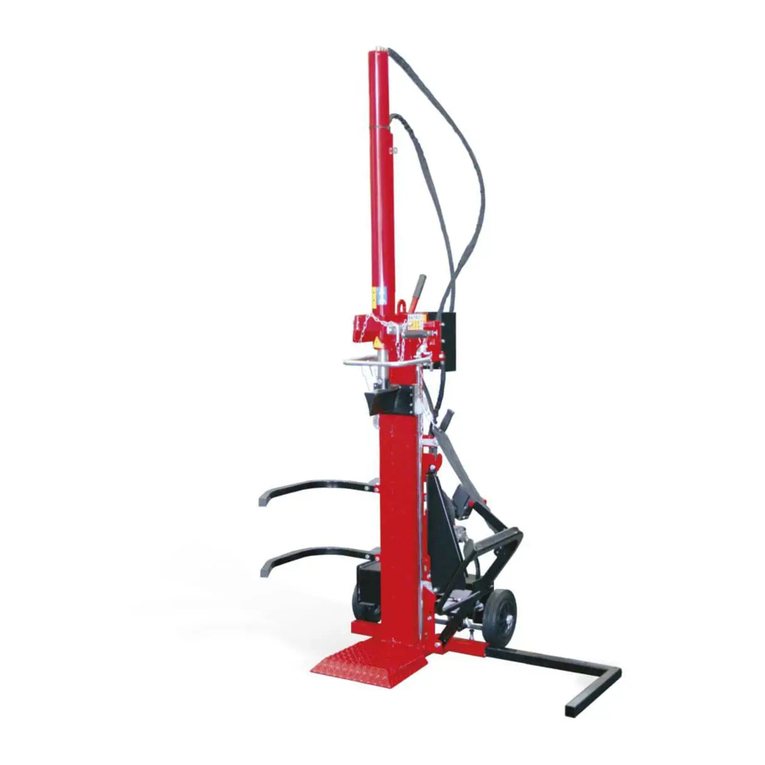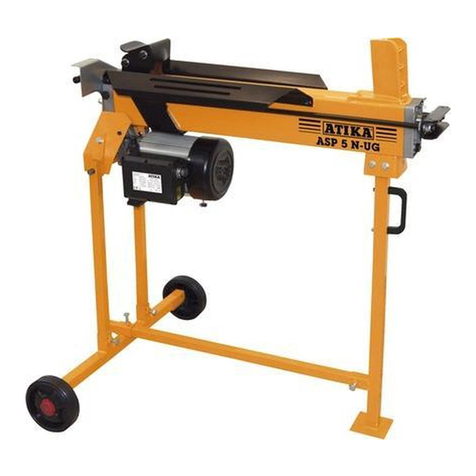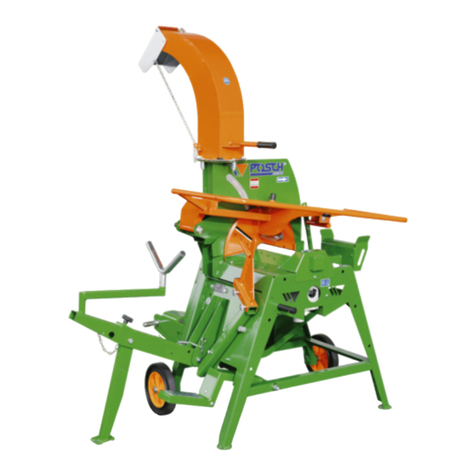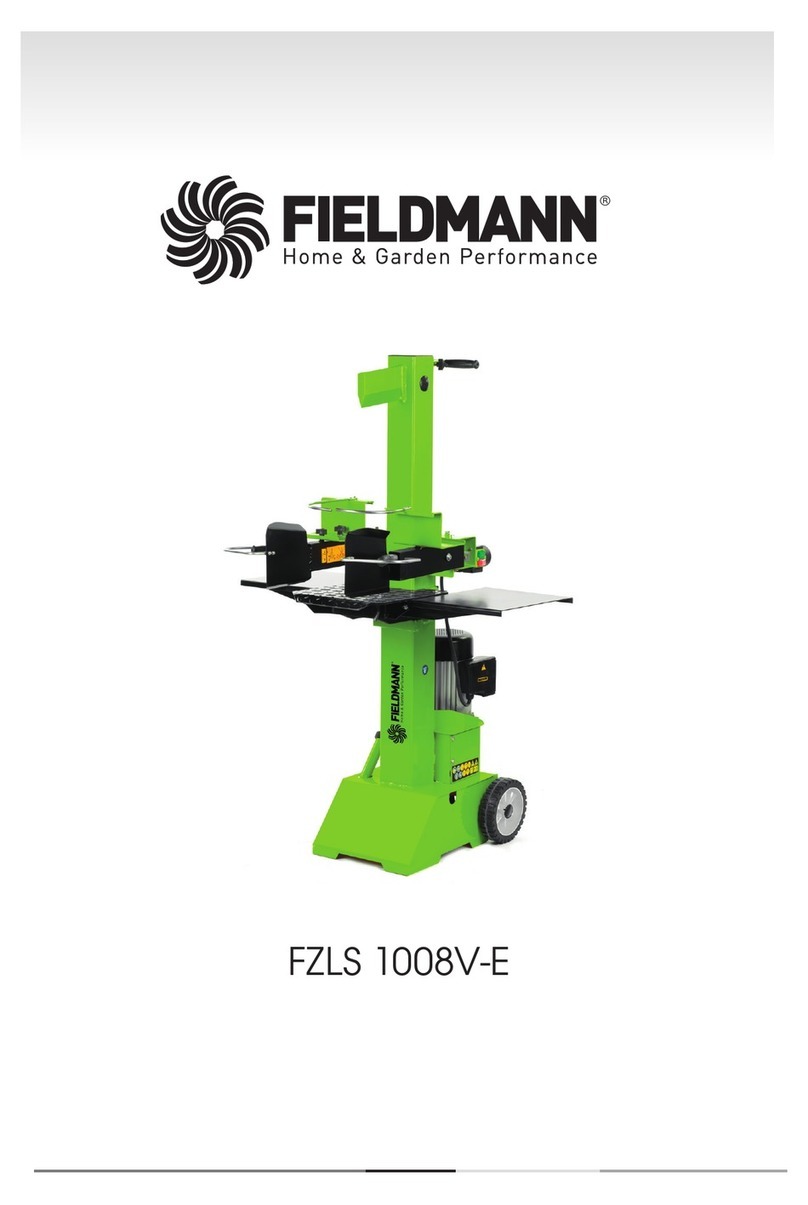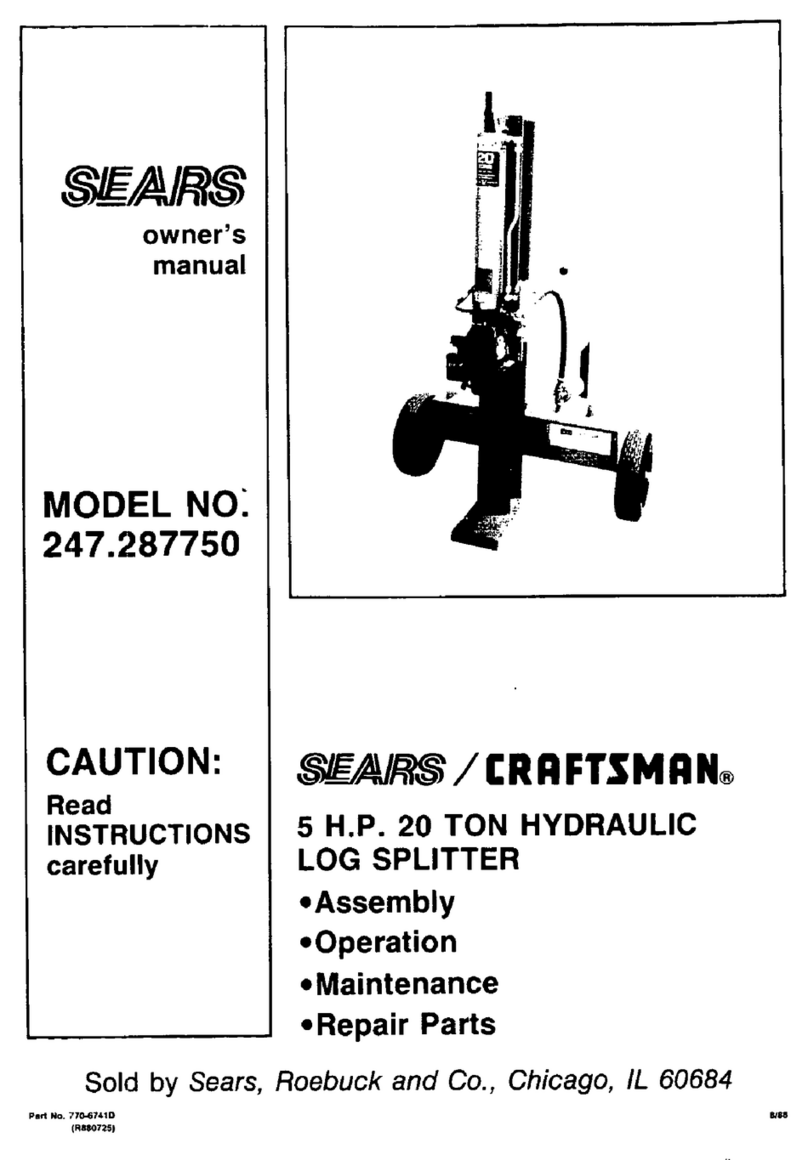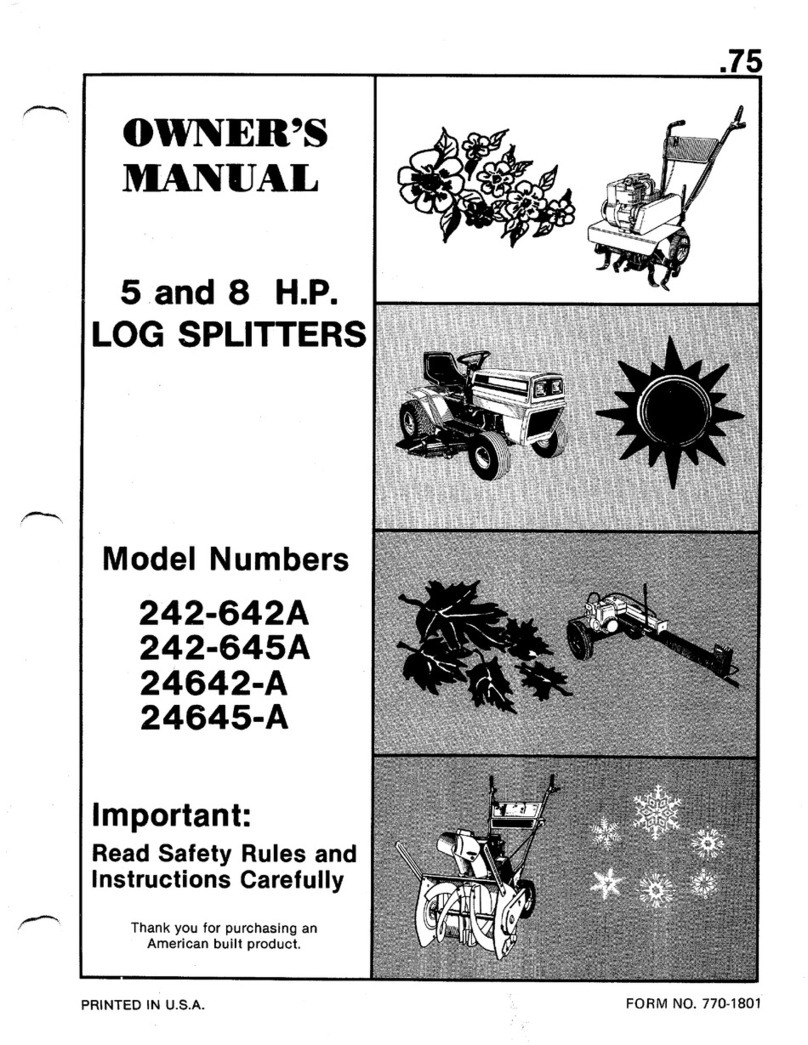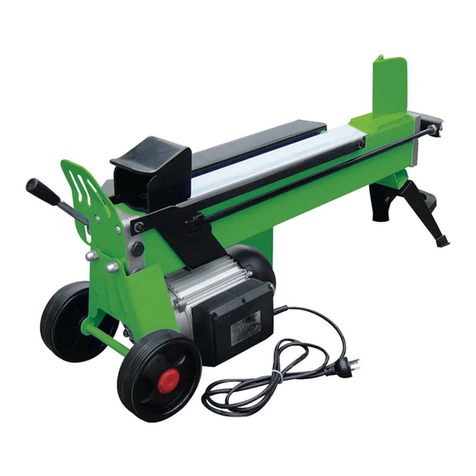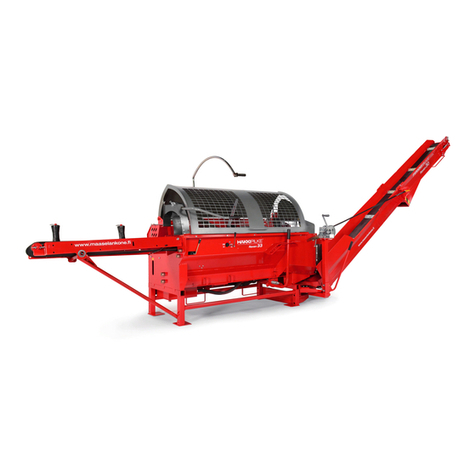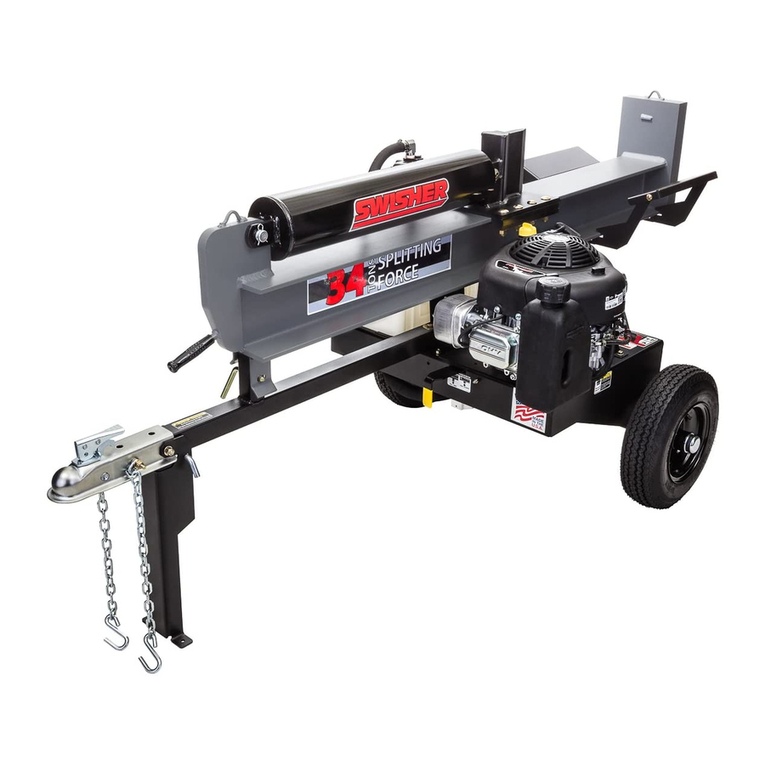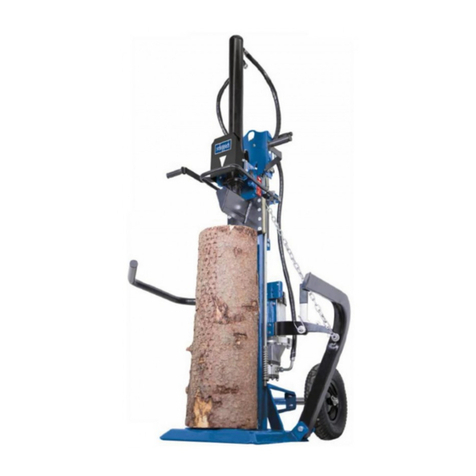
INSTRUCTIONS FOR:
HORIZONTAL LOG SPLITTER 4 TONNE 370MM/
5 TONNE 520MM CAPACITY
MODEL No's: LS370H & LS520H
Thank you for purchasing a Sealey product. Manufactured to a high standard this product will, if used according to these instructions and
properly maintained, give you years of trouble free performance.
Safe and easy way to split logs, offering continuous sizing and up to 4 tonne
(LS370H), or 5 tonne (LS520H) of pressure. Splits logs almost instantly upon
contact, keeping labour and work time to a minimum. Fitted with a two hand
safety operation, push-button and lever.
Model No: ........................................ LS370H................LS520H
Maximum Log Length x Diameter: .. 370x250mm .........520x250mm
Maximum Load Pressure: ............... 4tonne..................5tonne
Motor power: ................................... 1500W/230V ........2200W/230V
Overall Size (WxDxH): .................... 750x250x420mm .940x270x510mm
Weight: ............................................ 37kg .....................42kg
2. INTRODUCTION & SPECIFICATION
1.2. GENERAL SAFETY.
3 Maintain the log splitter in good condition (use an authorised service
agent).
3 Replace or repair damaged parts. Use genuine parts only. Unauthorised
parts may be dangerous and will invalidate the warranty.
3 Use a qualified person to lubricate and maintain the log splitter.
7 DO NOT use brake fluid to top up hydraulic unit.
3 Locate the log splitter in a suitable work area, keep area clean and tidy and
free from unrelated materials, and ensure that there is adequate lighting.
3 Keep the log splitter clean for best and safest performance.
3 Remove ill fitting clothing. Remove ties, watches, rings and other loose
jewellery, and contain long hair.
3 Maintain correct balance and footing, do not over-reach. Ensure the floor
is not slippery and wear non-slip, protective footwear.
3 Keep children and unauthorised persons away from the work area.
7 DO NOT use the log splitter for a task it is not designed to perform.
7 DO NOT operate the log splitter if damaged.
7 DO NOT exceed the stated log capacity of the log splitter.
7 DO NOT operate the log splitter when you are tired or under the influence
of alcohol, drugs or intoxicating medication.
7 DO NOT allow untrained persons to operate the log splitter.
7 DO NOT make any modifications to the log splitter.
7 DO NOT operate the log splitter in wet or damp areas or expose it to rain.
7 DO NOT operate the log splitter in areas where fumes from paint,
solvents, or flammable liquids pose a potential hazard.
7 DO NOT operate the log splitter with the guards or guides removed.
7 DO NOT operate the log splitter on the ground as this will bring
the operator's face too close to the machine where there is danger of
being struck by flying wood chips or debris.
3 Place the log splitter on a stable, flat and level workbench 60 to 75cm high
where there is plenty of room for handling. Bolt the log splitter to the
bench if it tends to slip, walk or slide.
3 Store the log splitter in a safe area away from children and other people
not qualified to use the log splitter.
3 Wear protective, electrically non conductive gloves .
3 Always wear safety goggles. Everyday spectacles are not sufficient
protection.
3 The log splitter must always be operated by one person only. Other people
must keep a safe distance from the log splitter especially when it is in
operation.
3 Ensure that there are no nails, screws or other foreign objects in logs to
be split.
3 The end of logs should be cut square.
3 Always pay attention to the movement of the log pusher.
7 DO NOT attempt to load a log until the log pusher has returned to the stop
position.
7 DO NOT allow another person to help you with a jammed log.
3 Keep hands away from the moving parts of the log splitter.
3 Keep hands away from splits and cracks which open in logs. They may
close suddenly and crush or cut off parts of your hands. For this reason do
not attempt to remove jammed logs by hand. A jammed log is a log which
is only partially split and continues to grip the splitting wedge.
7 DO NOT leave the log splitter until the ram has fully retracted.
7 DO NOT force the log splitter to work beyond its specified capacity.
pWARNING! The warnings, cautions and instructions referred to in this
manual cannot cover all possible conditions and situations that may occur.
It must be understood that common sense and caution are factors which
cannot be built into this product, but must be applied by the operator.
IMPORTANT: PLEASE READ THESE INSTRUCTIONS CAREFULLY. NOTE THE SAFE OPERATIONAL REQUIREMENTS, WARNINGS & CAUTIONS.
USE THE PRODUCT CORRECTLY AND WITH CARE FOR THE PURPOSE FOR WHICH IT IS INTENDED. FAILURE TO DO SO MAY CAUSE
DAMAGE AND/OR PERSONAL INJURY AND WILL INVALIDATE THE WARRANTY. PLEASE KEEP INSTRUCTIONS SAFE FOR FUTURE USE.
1.1. ELECTRICAL SAFETY. pWARNING! It is the user’s
responsibility to read, understand and comply with the following:
You must check all electrical equipment and appliances to ensure they
are safe before using. You must inspect power supply leads, plugs and
all electrical connections for wear and damage. You must ensure the
risk of electric shock is minimised by the installation of appropriate
safety devices. An RCCB (Residual Current Circuit Breaker) should be
incorporated in the main distribution board. We also recommend that
an RCD(Residual Current Device) is used with all electrical products. It
is particularly important to use an RCD with portable products that are
plugged into an electrical supply not protected by an RCCB. If in doubt
consult a qualified electrician. You may obtain a Residual Current
Device by contacting your Sealey dealer. You must also read and
understand the following instructions concerning electrical safety.
1.1.1. The Electricity At Work Act 1989 requires all portable electrical
appliances, if used on business premises, to be tested by a qualified
electrician, using a Portable Appliance Tester (PAT), at least once a year.
1.1.2. The Health & Safety at Work Act 1974 makes owners of electrical
appliances responsible for the safe condition of the appliance and the
safety of the appliance operator. If in any doubt about electrical
safety, contact a qualified electrician.
1.1.3. Ensure the insulation on all cables and the product itself is safe before
connecting to the mains power supply. See 1.1.1. & 1.1.2. above and
use a Portable Appliance Tester (PAT).
1.1.4. Ensure that cables are always protected against short circuit and overload.
1.1.5. Regularly inspect power supply, leads, plugs for wear and damage and
all electrical connections to ensure that none is loose.
1.1.6. Important: Ensure the voltage marked on the product is the same as
the electrical power supply to be used, and check that plugs are fitted
with the correct capacity fuse. A 13 amp plug may require a fuse
smaller than 13 amps for certain products, see fuse rating below.
1.1.7. DO NOT pull or carry the appliance by its power supply lead.
1.1.8. DO NOT pull power plug from socket by the power cable.
1.1.9. DO NOT use worn or damaged leads, plugs or connections.
Immediately replace or have repaired by a qualified electrician. A U.K. 3
pin plug with ASTA/BS approval is fitted. In case of damage, cut off
and fit a new plug according to the following instructions (discard old
plug safely). (UK only - see diagram below). Ensure the unit is
correctly earthed via a three-pin plug.
a) Connect the green/yellow earth wire to the earth terminal ‘E’.
b) Connect the brown live wire to live terminal ‘L’.
c) Connect the blue neutral wire to the neutral terminal ‘N’.
d) After wiring, check that there are no bare wires, that all wires
have been correctly connected, that the cable outer insulation
extends beyond the cable restraint and that the restraint is tight.
Double insulated products are fitted with live (BROWN) and neutral
(BLUE) wires only. Double insulated products are always marked with
this symbol . To re-wire, connect the brown and blue wires as
indicated below. DO NOT connect the brown or blue to the earth
terminal.
1.1.10. Some products require more
than a 13 amp electrical
supply. In such a case, NO
plug will be fitted. You must
contact a qualified electrician
to ensure a 30 amp fused
supply is available. We
recommend you discuss
the installation of an
industrial round pin plug
and socket with your
electrician.
1.1.11. Cable extension reels.
When a cable extension reel
is used it should be fully unwound before connection. A cable reel with
an RCD fitted is recommended since any product which is plugged into
the cable reel will be protected. The section of the cores of the cable is
important and should be at least 1.5mm², but to be absolutely sure that
the capacity of the cable reel is suitable for this product and for others
that may be used in the other output sockets, we recommend the use of
2.5mm² section cable.
1. SAFETY INSTRUCTIONS
Original Language Version LS370H & LS520H Issue: 3(I) - 30/10/13
RECOMMENDED
FUSE RATING: 13AMP
© Jack Sealey Limited
